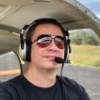too aggressive leaning?
-
Members Online
- Parker_Woodruff
- 47U
- Sam0
- Slick Nick
- flyingscot
- Pinecone
- IvanP
- Sixstring2k
- 0TreeLemur
- eman1200
- TangoTango
- David Lloyd
- ta2too
- laytonl
- VetRepp
- Scottknoll
- ckb
- GeeBee
- squawkvfr
- chrisburdzy98
- rex280ia
- Yetti
- RoundTwo
- 201Mooniac
- Cody Stallings
- Rmfriday
- redbaron1982
- MarquezJC
- LP1
- PT20J
- Justin Schmidt
- dc0341
- SilentT
- EricJ
- hammdo
- toto
- Martin S.
- theanswriz42


Recommended Posts